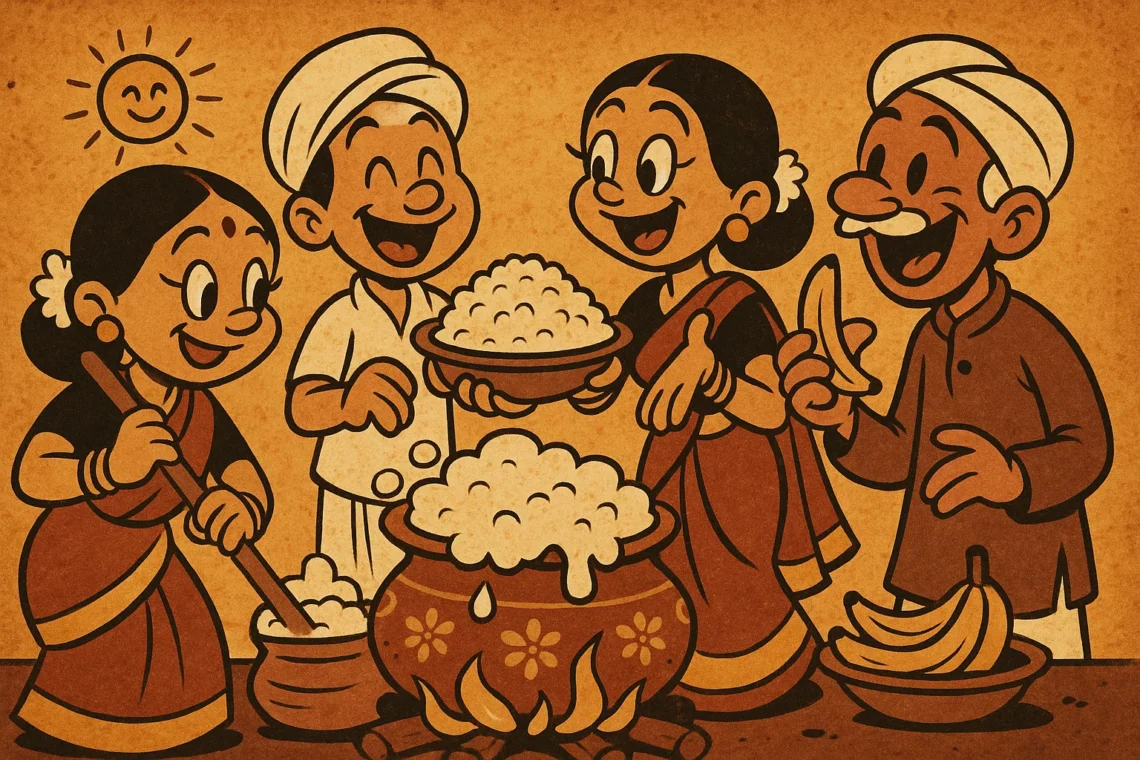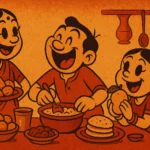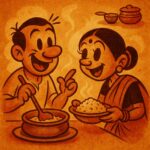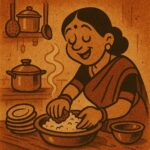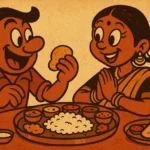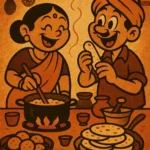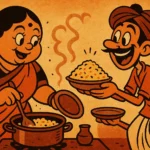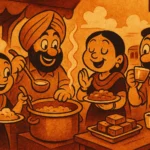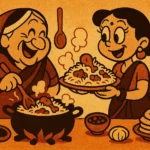You don’t just eat pongal. You arrive at it. Slowly, through the smell of ghee in the morning air, the gentle hiss of rice simmering, and the clatter of a ladle scraping the sides of a well-used pot. You arrive through the hunger that builds not from craving something spicy or fancy, but from wanting something grounding, warm, and entirely forgiving. Because pongal isn’t just food. It’s a ritual. A rhythm. A bowl of edible reassurance.
It’s the softest thing you’ll eat all week—and somehow, the strongest. Equal parts rice and moong dal, pressure cooked into a hug. Topped with ghee, tempered with black pepper, cumin, ginger, and sometimes a rogue cashew or two browned to perfection. It’s not flashy. It’s not colorful. But one spoonful and everything inside you exhales.
The Dish That Holds You
In most South Indian homes, pongal is the answer to many questions. What do you make when someone is tired? Pongal. When you’re sick, and rasam feels too sharp? Pongal. When it’s early, or rainy, or just one of those days when everyone wants something soft? Pongal. It doesn’t demand. It just shows up—hot, heavy, and full of the kind of care that doesn’t need to be spoken aloud.
There’s a precision to how it’s made, even if no one admits it. Too much dal and it’s heavy. Too little, and it’s just rice. The texture has to be right—creamy, but not soupy. The ghee must be generous, but not greasy. The peppercorns must make their presence known, but not dominate. And the smell—oh, the smell—is the smell of being home.
Pongal the Festival, Pongal the Feeling
For many, “pongal” also means the harvest festival. A day when the first rice of the season is celebrated, boiled until it overflows, marking abundance and gratitude. It’s cooked outdoors, in clay pots, over open flames, with turmeric leaves and sugarcane decorating the background. And when it boils over, everyone shouts “Pongalo Pongal!”—not because the pot is a mess, but because it means prosperity is spilling over. That is pongal too—not just a dish, but a declaration.
But even on regular days, pongal holds that same spirit. It’s a quiet celebration of enoughness. Of simplicity done right. Of finding comfort in a bowl without needing anything else to prove its worth. No side dish, no garnish, no explanation. Just pongal. As it is.
My Version, and Hers
I learned to make pongal from watching my mother, not reading a recipe. She didn’t say much—just moved with purpose. Roasting the dal till it smelled nutty. Washing the rice without wasting a drop. Stirring with slow confidence. She’d taste it right before the ghee went in, always nodding slightly, always trusting her hand. When I make it now, mine tastes a little different. Less instinctive. A little more cautious. But I still serve it in the same steel bowl. I still add a spoon of ghee at the end. I still eat it slowly, with my feet tucked under me and the fan whirring softly in the background.
Not Just Food, but Memory
Pongal is what you feed toddlers and elders alike. It’s what temples offer as prasadam. It’s what sits quietly at weddings, on banana leaves, holding its place next to more glamorous dishes. It’s what you make when you don’t know what else to make. It’s the dish that never feels like a compromise.
Because pongal is not just about taste. It’s about texture. About temperature. About time slowing down. It’s about all the mornings you woke up to something warm on the stove. About the hands that stirred it before you ever learned to do it yourself. About the truth that sometimes, a bowl of rice and dal can do more for the soul than all the fancy meals in the world.
Pongal isn’t just a dish. It’s an act of care, of history, of softness in a world that moves too fast. And in its warmth, we find our way back home.
Born in Mumbai, now stir-frying feelings in Texas. Writes about food, memory, and the messy magic in between — mostly to stay hungry, sometimes just to stay sane.

